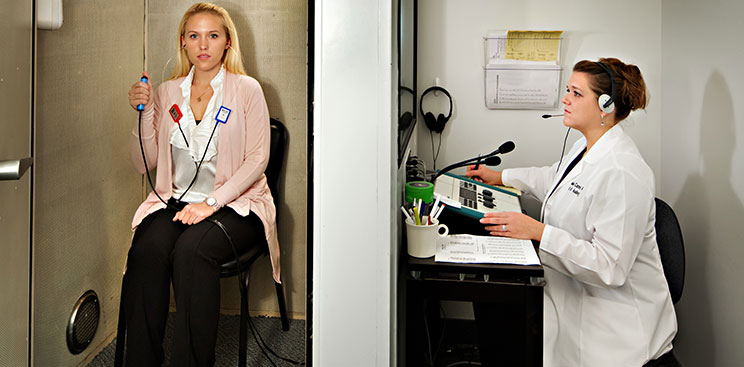Hearing Examinations Explained

We are all encouraged to get our hearing examined by a qualified hearing care professional, but it all seems a bit scary and unfamiliar. This is why many people avoid it for as long as they can, even though the procedure is actually very simple and completely painless.
Basically, a hearing test involves wearing a pair of headphones and being exposed to various degrees of sounds. These sounds are emitted through the headphones at different volumes as well as varying pitches. The purposes of these sounds is to examine whether you have hearing loss in the first place, and if so, the intensity of hearing loss as well as the type of hearing loss that you have.
Hearing tests may also require you to repeat words out loud that are played into your ears using the headphones. Sometimes, background noises are added to this particular test to see whether you are able to hear in the presence of noise. Each of the ears is tested separately to examine the degree to which each ear is affected by hearing loss.
Your test results will basically tell you whether you have hearing loss and if so, how severe it is. Hearing loss levels range from mild to severe, depending on the decibel level of your hearing loss.
Some hearing tests also check for bone conduction to see whether there are structural defects within your ear that may be causing hearing loss. Sometimes, hearing tests can even uncover certain underlying medical ailments such as vertigo, meniere’s disease, otosclerosis, diabetes, arthritis, and even cardiovascular disease. This is why it is important not to blow off a hearing examination or take it lightly.
Audiologists also check for structural problems or physical obstructions within the ear through a physical examination of the ear using an otoscope. This can help detect any trapped earwax, ear infection, or abnormal growth within the ear. Your hearing is a delicate process and once it is lost, it cannot be regained. This is why it is important to get your hearing examined once each year to detect any early signs of hearing loss to prevent any further damage to your hearing.
